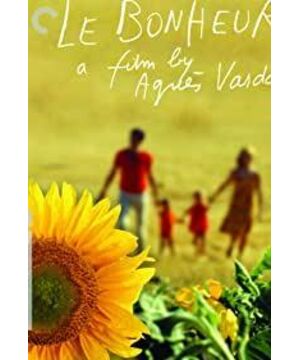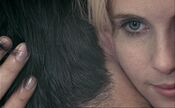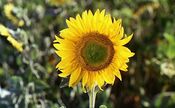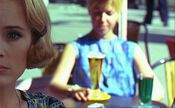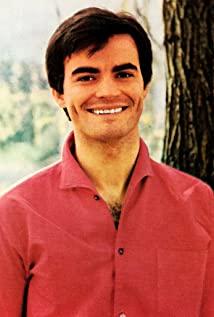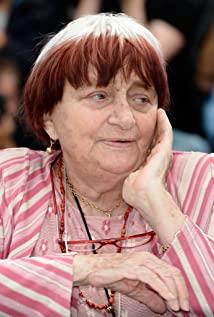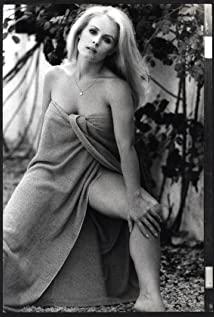Highly saturated shades based on primary colors are presented throughout the film, including azure, scarlet, olive green, lemon yellow, as well as some lower shades of color, including pink, lotus, khaki, etc., which express their Symbolic meaning in culture, although as a foreigner these colors may have different meanings in my culture and in French culture, some general modern concepts are approximate, such as red for passion and danger, azure for The sky has the meaning of tranquility and freedom, while yellow and green are reminiscent of the seasonal changes of plants, high-brightness yellow is reminiscent of sunlight, and pink and lotus are somewhat ambiguous. In the clip of the cafe, not only the symbolism of color is used to imply the development of the story, but also color is used to connect the shots, and the tryst at the cafe is also one of the important bridges to establish the relationship between the male protagonist and Emilie. So, in this clip, how does the female director use the language of color and the language of the lens to shape the characters?
First, the first set of shots begins with a quick montage of yellow road signs, gold statues, and a backdrop of green forests, suggesting that the story takes place near the Vincennes Forest. Then there is the shot of the male protagonist's sky blue vehicle. There is a yellow advertisement on his vehicle. Although the sky blue is not obvious in the light, the yellow advertisement and the previous yellow or gold object form a color connection. A parallel montage follows, linking the truck's advance to a pair of male and female lions, as well as a bird. The appearance of animals hints at the beginning of an uninhibited relationship, and it is also a representation of the wildness in the hearts of the two characters.
This is followed by a close-up of a set of stamps, including a stamp of a saint, and a large close-up of a stamp bearing Chagall's painting, which also hints at themes of marriage and love, and may also foreshadow these two. personal destiny. In the post office, Emilie is wearing a sky blue uniform and the male protagonist is wearing a black casual T-shirt. Obviously, he is not here to work, because his uniform is also sky blue when he works. They then had a conversation, a brief conversation presented as a montage of shoulder shots rather than head-to-head. The figure is located in the center of the lens, occupying a dominant position, as if it is an image of egocentrism. In the dialogue between the two people, it seems that there is no object to talk to, which may also mean that the two people are independent of each other in this relationship. . This is also reflected in the conversation in the cafe at the back.
Emilie talks about Le castel and chateau, the camera cuts to a blue sign that says Castel is a sign, and a red sign that says chateau, through the change of color, from the blue-based mailing to the red Wait for a warm-colored cafe. Red also symbolizes love and passion.
In the cafe scene, the director uses a lot of zoom photography techniques. She uses a lens with a shallow focal length to constantly change the position of the focus. Sometimes the focus is on the character, and sometimes it is scattered in the background, as if the human eye is constantly moving, although Talking, but the eyes are constantly looking at the people and things around them, as if to explain a little uneasiness in the heart of the two or absent-mindedness towards each other, or simply tell the inner state of the characters through the colors, objects and people in the background .
First, a woman dressed in red walks past the camera, and a medium shot shows the two of them in the cafe. We can see that the cafe is dominated by ambiguous lotus and red, and then there is a shot of a conversation, They sat on the same side of the table and seemed close. Similarly, when filming a conversation between two people, the director only shot the shoulders of one person at a time and then transferred the shot to the other person through panoranique, and then both of them were included in the shot. This is a scene with almost only face. A close-up shot of the Ministry, the two are squeezed into the frame of the screen, appearing even more intimate. Of course, the 1.66:1 aspect ratio appears to be narrower than the 16:9 aspect ratio. In the last few seconds of the conversation, the camera focuses on the "bouche d'incendie" sign on the back wall, alluding to the conversation between the two getting on fire. Then, with the male protagonist's sight, he looked at two cups of drinks, one yellow and one green, his eyes moved with the drinks to the table behind Emilie, where a woman in blue was there. At this point, half of Emilie's face is in the camera, but out of focus, and then the focus is on her face. The yellow-green drinks here seem to echo the previous scene of the male protagonist and his wife in the forest. Then the camera turns to the male protagonist's blue cigarette, and also uses the movement of the focus to lead the audience's eyes from the cigarette to the close-up of the male protagonist's face. At this point we were watching from Emilie's point of view. She seemed to be fascinated by him, because the distant objects in the lens were very blurred. At this point the camera cuts to the male protagonist's line of sight, a close-up of Emilie's chest, she is wearing a blue dress with a gold necklace, a blue coffee mug interrupts our view, and then the camera moves up to her face . These shots seem to show the male protagonist's sexual desire for Emilie and his desire to break through the marriage. (Blue seems to symbolize freedom and indifferent, irresponsible frivolity, it is not as solid as lapis lazuli but as light as the sky). Then, another close-up of the hero's face, the focus moves behind him and we see a woman in red with her lover. The footage from Emile's perspective seems to reveal that her heart longs for love and passion.
The close-up of the two signboards named the theme of the segment, seduction and mystery, and their colors adopted the main tone of the cafe. Varda delivers some semi-diegetic message with a quick montage of street signs.
Immediately followed by their conversation, they talked about going to the castle to play, the male protagonist said inside, a Flashfoward inside the castle, Emilie said outside, a Flashfoward outside the castle, in these two quick flashbacks is their imagination, in Both of them are out of focus in the shot, and although they are blurred, we can see them behaving intimately and wearing the same sky blue clothes, as if announcing their love. But the fuzzy image seems to imply that the two are not sure about this relationship in their hearts, and they are not familiar with each other, so their images of each other are fuzzy.
Perhaps Varda deliberately blurred out the details of the characters. We only know that this is a man who is going to cheat and a woman who is teasing him. We can see that their desires are shown in symbolic language, but the character of the characters very general. We don't see any personal character, like the general public, there are countless stories like this in life, but the use of visual language makes it beautiful, and like the indifferent characters in Bresson's films, There's no overt climax throughout the movie, and even Teresa's death is downplayed, the hero cries, the child cries, the funeral is held, and then back to normal life. Most of our lives are like that, without dramatic curiosity or emotional explosions. Typed characters in movies are like fables, as if to allow us to combine movies and life, and then think for ourselves and then gain our own insights.
View more about Le Bonheur reviews


